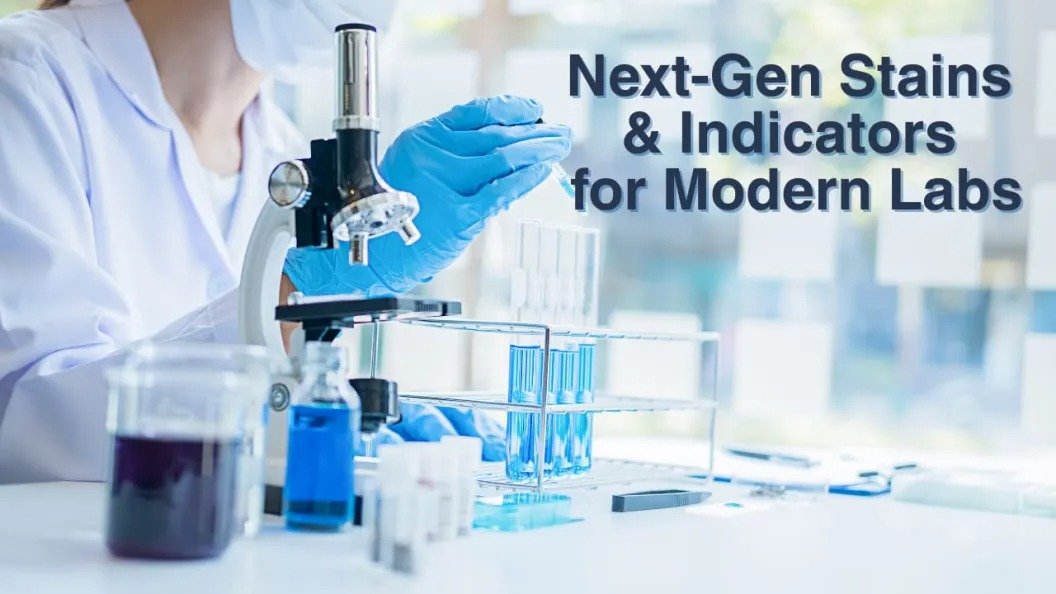In modern laboratories, biological stains and pH indicators are indispensable tools. They allow researchers, clinicians, and educators to visualize microscopic structures, monitor biochemical reactions, and validate scientific results with precision. However, as science advances, so do the expectations placed on these tools. Today’s labs demand stains and indicators that are not only accurate but also safer, more sustainable, and aligned with evolving regulatory and quality standards.
This article explores how biological stains and pH indicators are evolving to meet modern laboratory requirements and how companies like GSP Chem are contributing to this transformation.
Why Biological Stains and pH Indicators Are Crucial in Modern Labs?
Before looking at their evolution, it’s important to understand why these substances are central to research and diagnostics:
- Biological Stains – Used to highlight specific cell structures, pathogens, or tissues, enabling clear visualization under microscopes. Examples include Wright’s stain, Giemsa stain, and Leishman stain, all of which remain gold standards in hematology and microbiology.
- pH Indicators – Substances that change color in response to acidity or alkalinity, providing quick and reliable measurement in chemical, biological, and industrial processes. Common indicators include Phenol Red, Bromothymol Blue, and Thymolphthalein.
As laboratories move toward higher precision, automation, and sustainability, these products must evolve accordingly.
Key Drivers Behind the Evolution of Stains and Indicators
Several factors are pushing the evolution of biological stains and pH indicators:
- Stringent Regulatory Standards – Laboratories must comply with ISO certifications, GMP (Good Manufacturing Practices), and environmental guidelines, requiring suppliers to provide validated, high-quality products.
- Automation in Laboratories – Automated equipment demands reagents that are consistent, stable, and compatible with digital systems.
- Sustainability and Eco-Friendliness – There is a growing emphasis on minimizing toxic substances and creating eco-friendly alternatives to traditional dyes.
- Rising Demand in Healthcare and Research – Diagnostic accuracy in areas like cancer research, infectious diseases, and genetics requires highly sensitive stains and indicators.
- Globalization of Supply Chains – Laboratories worldwide now expect reliable and uniform standards from suppliers, pushing chemical manufacturers to improve product quality and availability.
How Biological Stains Are Evolving?
a) Enhanced Diagnostic Accuracy
Modern stains are formulated to provide sharper contrast, faster results, and more reliable differentiation of cells and pathogens. For instance:
- Wright’s and Giemsa stains are now refined to detect blood parasites like malaria with higher clarity.
- Specialized immunohistochemistry stains are being developed for cancer diagnostics.
b) Longer Shelf Life and Stability
Today’s labs require reagents that can remain stable under varying storage conditions.
Manufacturers are focusing on improving formulation stability to reduce wastage and ensure consistent performance.
c) Safer Alternatives
Traditional stains often contain hazardous chemicals. Modern innovations aim to minimize toxicity without compromising performance. For example, eco-friendly alternatives to carcinogenic dyes are becoming available.
d) Customization for Specialized Labs
Suppliers like GSP Chem now offer tailored formulations of stains for specific industries, whether it’s life sciences research, diagnostic labs, or industrial microbiology.
How pH Indicators Are Evolving?
a) Wider Sensitivity Ranges
Traditional indicators were designed for narrow pH ranges. Modern indicators, such as Thymol Blue, provide dual-range sensitivity, allowing flexibility in experiments and industrial applications.
b) Integration with Smart Technology
Digital pH meters often pair with colorimetric indicators for validation. Researchers are also exploring AI-driven color recognition tools that can enhance precision in detecting subtle shifts.
c) Eco-Friendly Production
The shift toward green chemistry means pH indicators are increasingly produced with sustainable raw materials and processes that reduce environmental impact.
d) Industrial Applications Expansion
pH indicators are now applied beyond research labs in food safety testing, water treatment plants, pharmaceuticals, and cosmetics, requiring consistent and scalable production.
Meeting Modern Laboratory Standards
Modern laboratory standards focus on three pillars: quality, safety, and sustainability. Biological stains and pH indicators must evolve in line with these priorities:
- Quality – Rigorous testing ensures reproducibility across experiments and laboratories worldwide.
- Safety – Compliance with regulations like REACH and OSHA ensures protection for lab professionals.
- Sustainability – Adoption of greener chemicals helps reduce environmental footprints while meeting corporate social responsibility goals.
Suppliers that fail to adapt risk being phased out by global research institutions and industries that demand cutting-edge products.
GSP Chem’s Role in This Evolution
As one of the leading chemical reagent suppliers in India, GSP Chem is actively driving this transition.
- Commitment to Quality – GSP Chem’s products undergo strict quality control, ensuring compliance with international laboratory standards.
- Global Reach – As a trusted chemical exporter from India, GSP Chem provides reliable access to stains and indicators across global markets.
- Innovation in Stains – Offering high-performance stains like Wright’s stain, Giemsa stain, Leishman stain, and Carbol Fuchsin, all optimized for diagnostic accuracy.
- Advanced pH Indicators – Supplying essential indicators such as Phenol Red, Bromocresol Purple, and Thymolphthalein with enhanced stability and sensitivity.
- Sustainability Focus – GSP Chem integrates eco-conscious manufacturing practices to meet growing global demand for sustainable laboratory chemicals.
By aligning with evolving lab standards, GSP Chem strengthens its position as a global partner for researchers, scientists, and industrial clients.
The Future of Biological Stains and pH Indicators
Looking ahead, we can expect exciting developments:
- Nanotechnology integration for enhanced visualization at the molecular level.
- AI-powered diagnostic platforms that interpret color changes from stains and indicators.
- Hybrid indicators combining multiple functionalities (e.g., dual pH and temperature sensitivity).
- Automation-ready reagents tailored for robotic lab systems.
- Greater demand for sustainable alternatives to meet global environmental policies.
These innovations will not only improve research accuracy but also redefine how labs function in the era of smart and sustainable science.
Conclusion
Biological stains and pH indicators have been essential to science for decades, but modern laboratories require tools that go beyond traditional functions. The evolution toward higher accuracy, eco-friendliness, safety, and digital integration reflects the demands of an advancing world.
Suppliers like GSP Chem are at the forefront of this change, ensuring that scientists and industries have access to stains and indicators that meet global standards while supporting innovation.
As the demand for sustainability, precision, and resilience grows, the evolution of these tools will continue to play a vital role in shaping the future of laboratory science and industrial applications.








